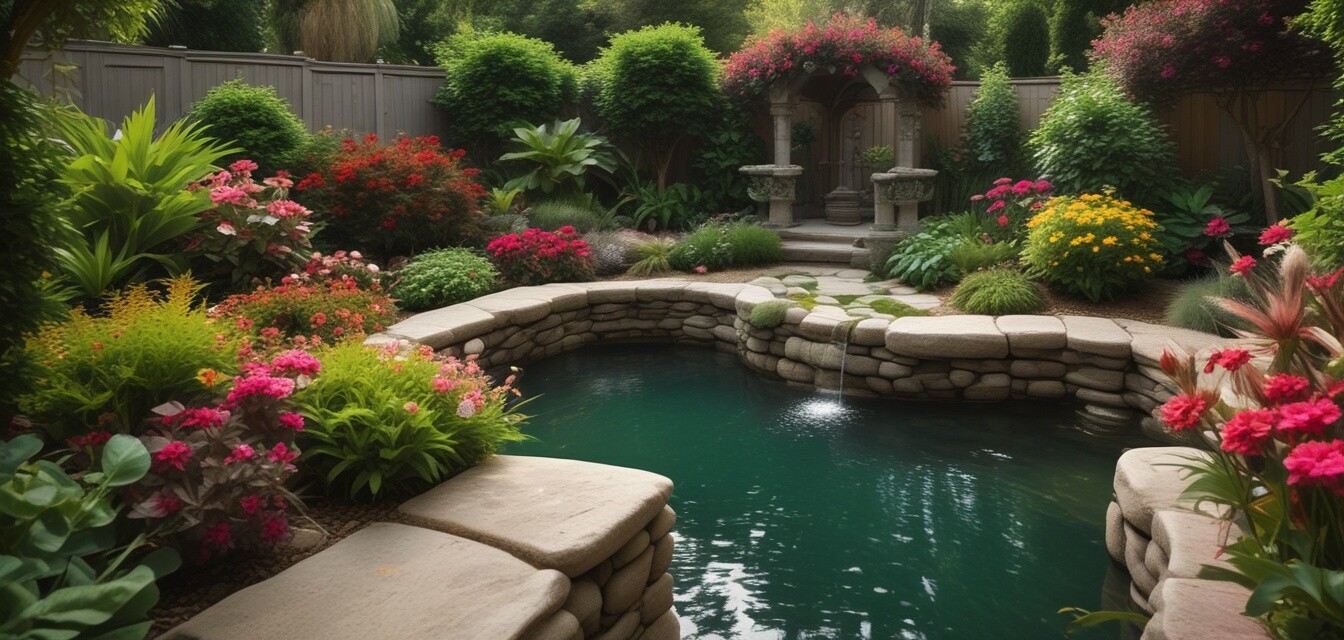
Designing a garden that satisfies all senses
Key Takeaways
- Engage all five senses: sight, smell, sound, touch, taste.
- Incorporate a variety of plants to provide visual interest and fragrance.
- Include water features for soothing sounds and a refreshing atmosphere.
- Create textured surfaces and seating areas for relaxation and comfort.
- Grow herbs and edible plants to stimulate the sense of taste.
Creating a garden that not only pleases the eye but also engages all the senses is a fulfilling endeavor. By carefully selecting plants, materials, and design elements, you can craft an outdoor space that offers a holistic experience. This article will provide inspiration and practical tips on how to design a garden that satisfies sight, smell, sound, touch, and even taste.
Visual Appeal
A well-designed garden captivates the gaze. The visual aspects of a garden can transform it into a stunning outdoor sanctuary. Here are some ideas to enhance visual interest:
- Diverse Plant Selection: Choose a variety of plants with different colors, sizes, and shapes.
- Layering: Use layers of plants to create depth, from low-growing groundcovers to taller shrubs and trees.
- Garden Structures: Incorporate trellises, arbors, or gazebos for added architectural interest.
Fragrant Flora
The sense of smell can significantly enhance your gardening experience. Consider the following fragrant plants to create a delightful olfactory landscape:
- Flowering Herbs: Basil, rosemary, and lavender can add both fragrance and culinary value.
- Blooming Flowers: Choose fragrant varieties like roses, lilacs, and jasmine.
- Unique Trees: Incorporate trees like magnolia or sweet olive that emit pleasant scents.
Sounds of Nature
A garden is not just about what you see and smell; the sounds can also contribute to its character. Here are ways to add auditory elements:
- Water Features: Adding a fountain or birdbath creates soothing sounds that can be very peaceful.
- Wind Chimes: Strategically placed wind chimes can add a melodic tone to your garden.
- Wildlife: Attract birds and other wildlife with native plants, enhancing natural sounds.
Textures to Touch
Incorporating various textures invites interaction and connection with your space. Consider the following:
- Textured Plants: Use succulents, ferns, and other foliage with tactile surfaces.
- Natural Materials: Opt for stone pathways or wooden benches to offer a warm, rustic feel.
- Seating Areas: Create comfortable spots with cushions and blankets for relaxation.
Taste the Goodness
Why not incorporate edible elements into your garden? Plants that can be eaten stimulate the sense of taste:
- Herb Garden: A small herb garden can offer a fresh supply of flavors for your kitchen.
- Fruit Trees: Consider adding apple, peach, or berry-bearing plants.
- Vegetable Patch: Create an area dedicated to growing your favorite vegetables.
Bringing it All Together
When designing your garden, it's important to consider how these elements interact with one another. The right combination can create a space that is more than just beautiful, but truly immersive. Here’s how you can integrate the different sensory aspects:
| Sensory Element | Design Tip |
|---|---|
| Sight | Create focal points with brightly colored flowers. |
| Smell | Position fragrant plants near pathways for maximum enjoyment. |
| Sound | Incorporate water features with seating nearby to enjoy the sounds. |
| Touch | Add a variety of textures and cozy seating options throughout the space. |
| Taste | Plant herbs and vegetables in accessible areas for culinary convenience. |
Conclusion
Designing a garden that hits all the sensory notes can transform your outdoor space into an oasis of comfort and beauty. Whether you want a tranquil retreat or a vibrant gathering space, consider engaging all senses for a complete experience. For more gardening inspiration and techniques, be sure to explore other articles in our Garden Inspiration category.
Pros
- Holistic experience engaging all senses.
- Enhances relaxation and enjoyment.
- Encourages creativity and personal expression.
Cons
- Potential for high maintenance with diverse plants.
- Requires planning and design skills.
- Can be costly depending on materials and plants.